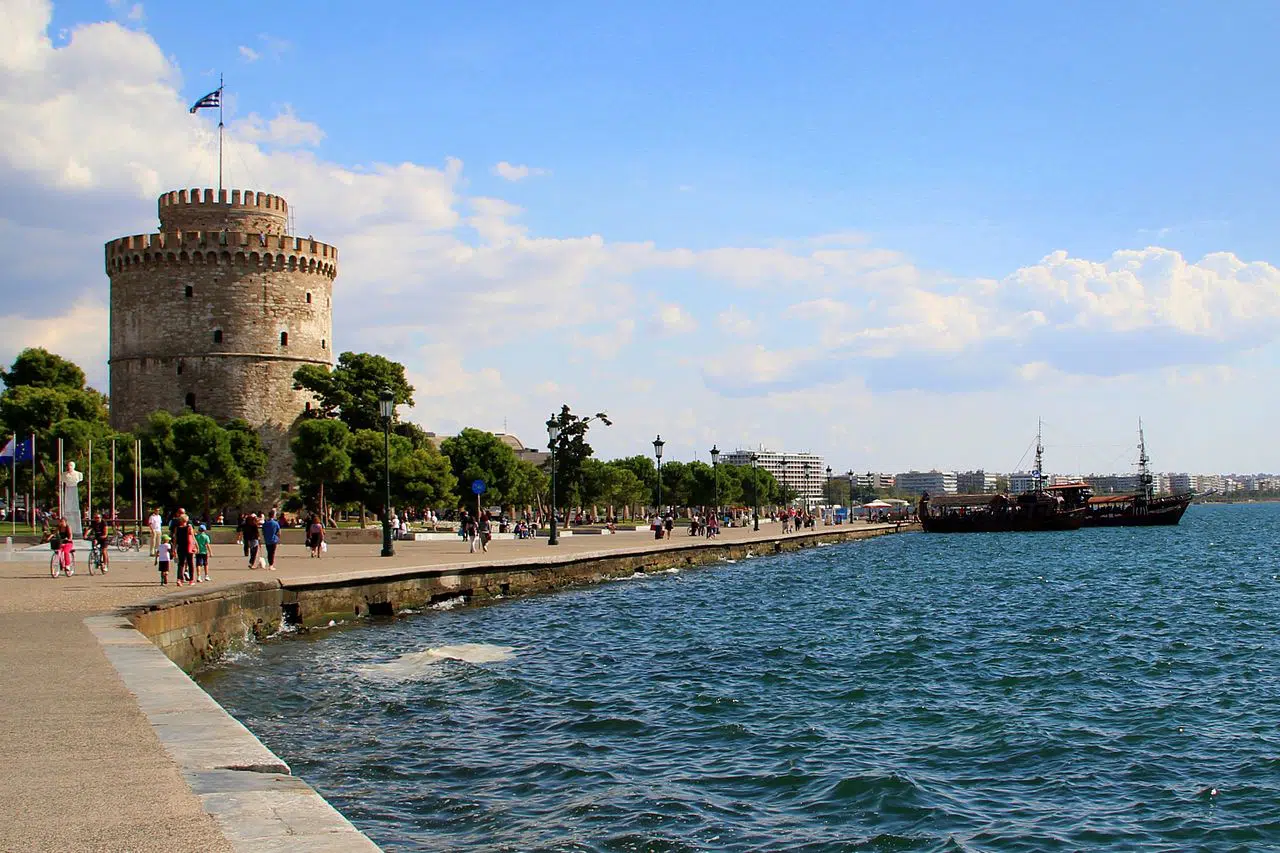
The European Film Academy (EFA) has included the White Tower of Thessaloniki on the list of Treasures of European Film Culture.
According to a recent announcement by EFA, in light of this year’s 35th European Film Awards, the Academy has added another twenty-two places deemed treasures of European film heritage, increasing the total number to thirty-five. The Treasures of European Film Culture is the Academy’s list of places that are symbolic to European cinema. These are places of historical value that need to be maintained and protected through the generations to come.
According to Matthijs Wouter Knol, Director of the European Film Academy (EFA), “instead of limiting…work to organizing the European Film Awards, the European Film Academy will embrace European film history and the people who have made European film what it is today.”
The White Tower, a historical, preserved monument of Greece’s cultural heritage, has been a UNESCO monument since 1988.
It is a sample of the fortified architecture of the sixteenth century and an integral part of the walls of Thessaloniki, which stands in the place where the Byzantine Tower of Leo once stood.
This was a natural cinematic setting for the movie Landscape in the Mist (1988) by Greek film director Theo Angelopoulos. The movie introduced Thessaloniki to the international film audience.
The White Tower in Thessaloniki Built Atop Byzantine Ruins
The current twenty-three meter (seventy-five foot) tall structure was built on top of a Byzantine fortification first mentioned in the 12th century AD.
After the Ottoman Empire invaded and seized control of the city in 1430, the existing tower was built on top of the old Byzantine structure. It was connected to the city’s defensive walls, most of which were unfortunately destroyed in 1866.
Throughout its Ottoman history, the White Tower was called “the Tower of Blood” or “the Red Tower” because of its reputation as a prison in which many were brutally tortured.
The story of how the tower became known as “the White Tower” is a matter of historical debate.
Some say that when the Greeks took Thessaloniki back from the Ottoman Empire during the First Balkan War in 1912, they painted the tower white. This act symbolized an end to the structure’s brutal history and the beginning of its status as a symbol of the city.
Others have noted that in early photographs taken before 1912, the tower was in fact already white.
A popular story states that in the second half of the 19th century, the Ottoman Empire attempted to literally “whitewash” the tower’s brutal history by considering a new name for the monument. In exchange for his freedom, a prisoner named Nathan Guidili suggested that they paint the tower white and call it the “White Tower.”
Regardless of its origin, by the early 20th century, the popular name for the structure was the White Tower, and it has remained so until this day.
During World War I, the White Tower served as a center of communications for the Allies, as well as a safe place for the storage of antiquities and other priceless artifacts from the ancient city. It then housed the headquarters for Thessaloniki’s air defense until 1983 when it became the property of the state.
Building Houses a museum
Currently, the monument is home to a museum that lays out the history of Thessaloniki. Visitors can climb up the Tower’s winding stairs until they reach its fascinating exhibition space.
At the top of the tower, visitors can admire breathtaking views of the entire city and the Thermaic Gulf.
Thessaloniki’s famous seaside pedestrian street, the promenade, also passes by the White Tower, making it a hangout spot for many of the city’s residents. It is by far the best location for photos, encompassing the entire history of the city and showing it off at its best.
See all the latest news from Greece and the world at Greekreporter.com. Contact our newsroom to report an update or send your story, photos and videos. Follow GR on Google News and subscribe here to our daily email!



